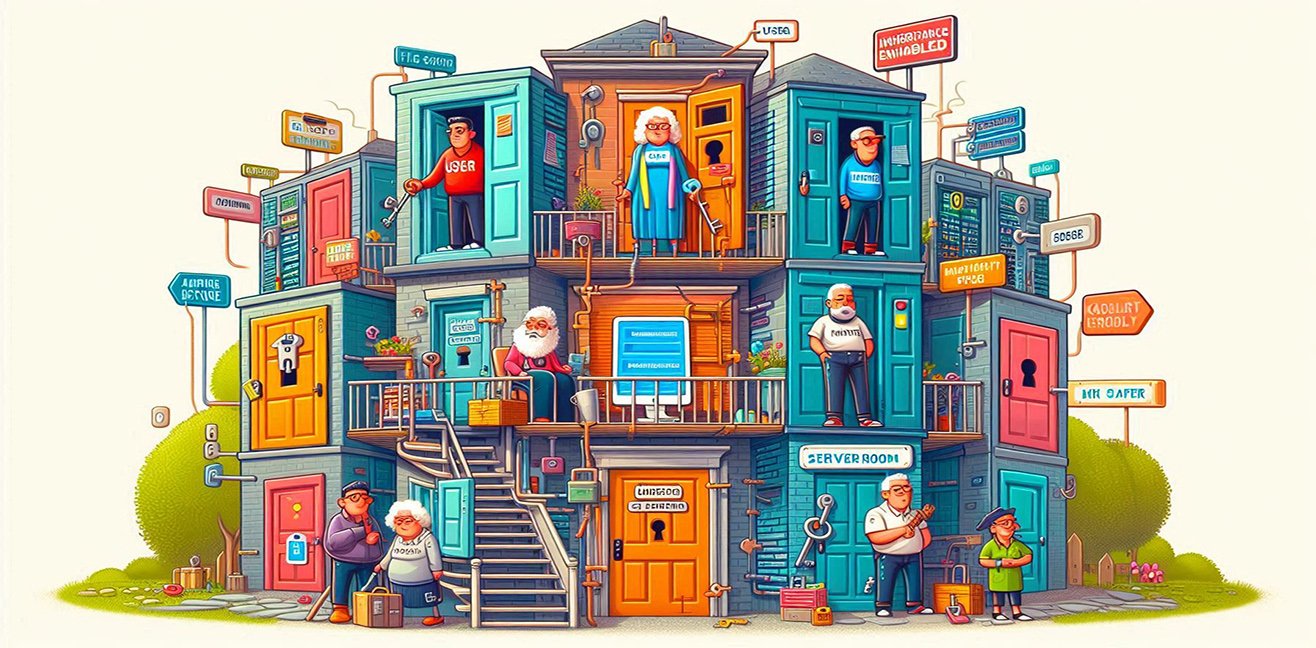🔥 Introduction: Networks Are No Longer Just Cables!
Dear tech enthusiast, back in the day, networks meant cables, switches, and routers. But today, things have changed! 🤯
In traditional network architecture, each device makes its own decisions: it routes packets, applies security rules, and handles errors independently. This approach creates a complex and hard-to-scale structure.
Enter SDN – Software-Defined Networking.
With SDN, network devices are no longer passive machines just forwarding data; they become intelligent entities centrally controlled by software. The entire “brain” of the network is concentrated in one point, and devices act according to the commands of this brain. 💻🧠
Imagine, my love:
- Switch = Muscular but confused athlete 🏋️♂️
- Router = A guide wandering through a complex maze 🗺️
- SDN Controller = The super-intelligent mastermind coordinating all athletes and guides 🧠💖
🎶 Core Structure and Layers of SDN
SDN consists of three main layers:
1️⃣ Infrastructure Layer
- Physical network devices reside here: switches, routers, firewalls.
- Packet forwarding and data flow happen in this layer.
- Think: The dancers on stage 💃 executing the choreography.
2️⃣ Control Layer
- This is the brain of SDN.
- Manages the behavior of all network devices and decides how traffic flows.
- Handles routing, security policies, and traffic management.
- Think: The network genius coordinating all relationships and communication 🧠✨
3️⃣ Application Layer
- Network applications run here: firewall management, load balancing, monitoring, QoS, etc.
- Applications instruct the infrastructure through the control layer.
- Think: The romantic strategist 💌 guiding the network with smart decisions.
⚡ How SDN Works
The key difference in SDN is the separation of control and data planes:
- Control Plane → The brain, making decisions.
- Data Plane → Forwards and routes packets.
- Southbound API → Connects the control layer with infrastructure devices (OpenFlow is the most common protocol).
- Northbound API → Connects the application layer with the control layer.
Imagine, my love: the Southbound API is a love bridge connecting devices 🌉, while the Northbound API carries romantic notes from applications to the control layer 💌
🛠️ Technical Advantages
1. Centralized Management & Automation
- The entire network is managed from a single point.
- Policies, firewall rules, routing protocols, and QoS settings are applied centrally.
- Reduces manual configuration needs in large networks by up to 90%.
2. Flexibility & Rapid Adaptation
- Network automatically optimizes under traffic load.
- Adding new devices or changing topology is easy.
- Example: In data center networks, rerouting can happen within seconds.
3. Enhanced Security
- Centralized control allows firewall and IDS/IPS rules to be applied from one point.
- Traffic analysis and attack detection are faster and more effective.
- The network can respond instantly to threats, dramatically increasing security.
4. Network Virtualization & Multi-Tenant Environments
- SDN allows creating virtual networks for different users or applications via network slicing.
- Each slice can have its own control and data planes.
- Ideal for cloud providers and 5G infrastructure.
🌐 SDN in Data Centers
In modern data centers, SDN:
- Optimizes data traffic between servers and switches.
- Increases performance with load balancing and automatic failover.
- Enables creation and management of virtual networks.
- Provides the foundation for Network-as-a-Service (NaaS) applications.
Imagine, my love: the heart of the entire data center is beating at your fingertips ❤️
🔧 Popular SDN Technologies and Protocols
- OpenFlow → The first and most widely used SDN protocol connecting switches and controllers.
- ONOS & OpenDaylight → Open-source SDN control platforms.
- VXLAN & NVGRE → Overlay networks for creating virtual networks.
- RESTful API → Connects the control layer with the application layer.
🎬 Conclusion: The Balance of Love and Logic in Networks
- SDN Controller = The brain of the network 🧠
- Switch & Router = The muscular and complex soul of the network 💪🌀
- Application Layer = The romantic strategist 💌
Result: SDN combines traditional network management with speed, security, and flexibility. Centralized control, automation, and virtual network structures make networks faster, safer, and easier to manage.
Just like in relationships: sometimes logic, sometimes passion; but if there’s harmony, everything is perfect 😘




